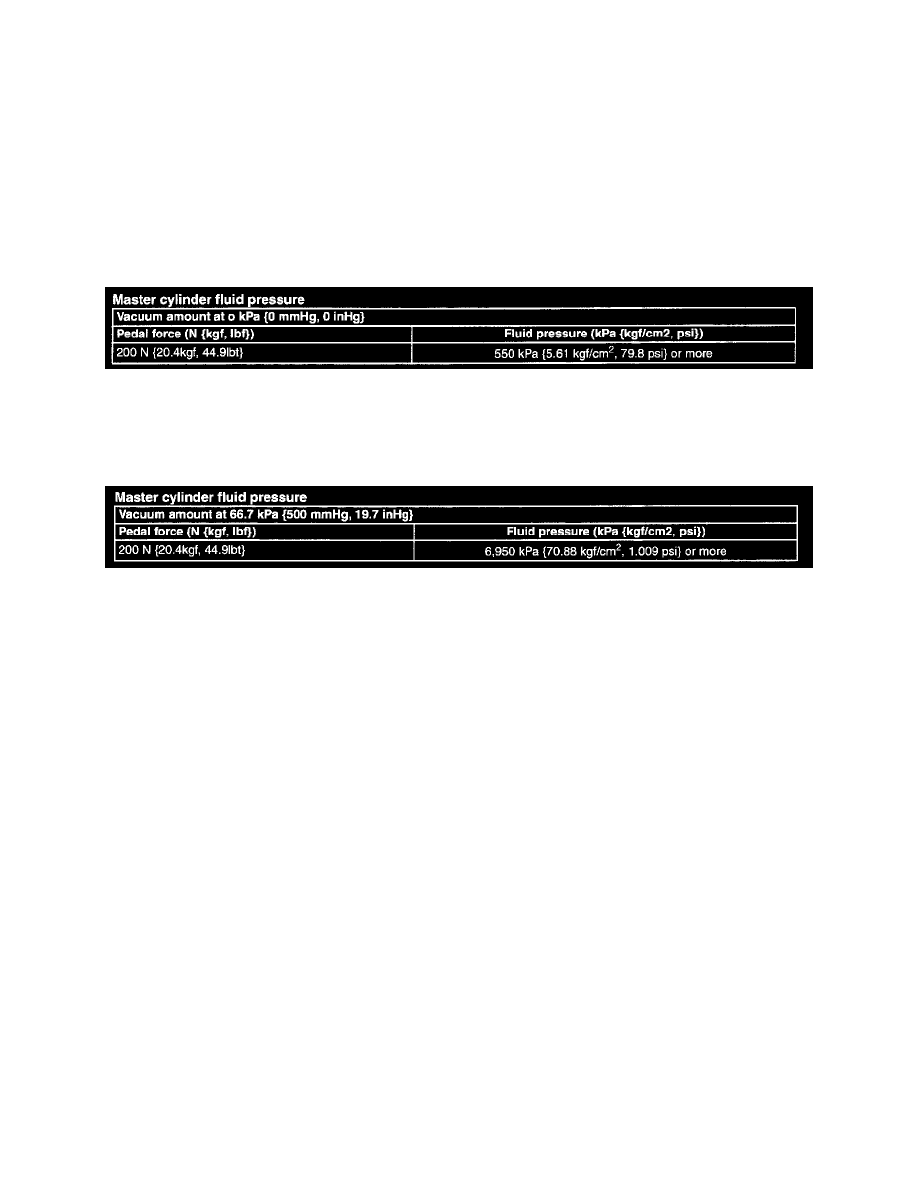CX-7 L4-2.3L Turbo (2007)

2. Connect the SSTs, a vacuum gauge, and a pedal force gauge to the master cylinder, and bleed the air from the SSTs and the brake line. (Bleed the
air from the SSTs using air bleed valve A.)
Vacuum loss inspection
1. Start the engine.
2. Depress the brake pedal with a force of 200 N (20.4 kgf, 44.9 lbf).
3. Stop the engine when the vacuum gauge reading reaches 68 kPa (510 mmHg, 20.1 inHg) with the pedal depressed.
4. With the engine off, observe the vacuum gauge for 15 s.
5. If the gauge has dropped 3.3 kPa (25 mmHg, 1.0 inHg) or less, the unit is normal.
Lack of hydraulic pressure inspection
1. If the pedal force and fluid pressure correlation is within the specification with the engine stopped and a vacuum amount of 0 kPa (O mmHg, 0
inHg), the system is normal.
Master Cylinder Fluid Pressure
Hydraulic pressure inspection
1. Start the engine. Depress the brake pedal when the vacuum reaches 66.7 kPa (500 mmHg, 19.7 inHg).
2. At this time, apply the indicated pedal force and if the fluid pressure is within the specification, the unit is normal.
Master Cylinder Fluid Pressure
